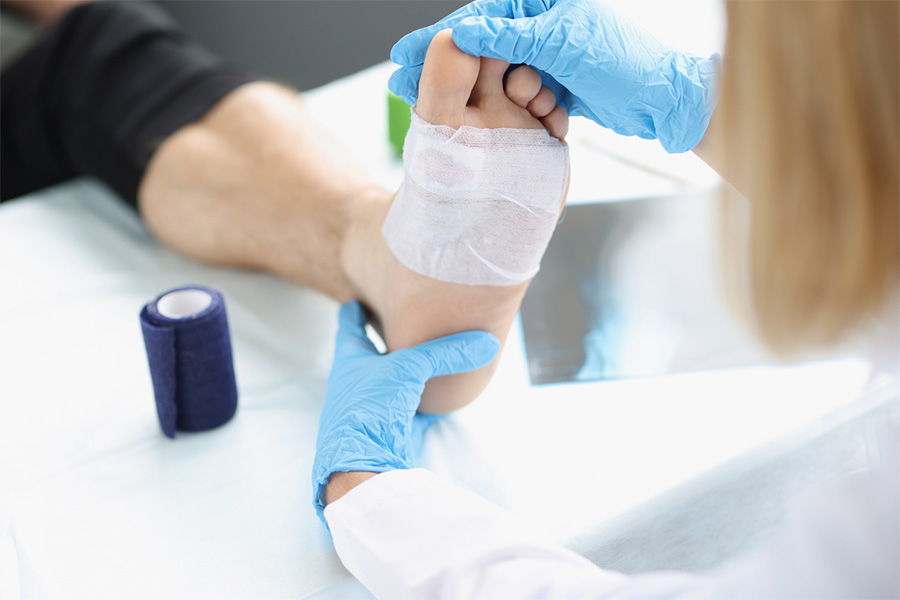If you’ve been diagnosed with diabetes, you know that maintaining normal blood glucose levels is not the only thing that you need to do. You also need to keep a keen eye on your feet at all times, because diabetes can severely affect your feet to the point of requiring amputation.
Almost 50% of diabetics develop diabetic neuropathy, which is the underlying condition that can lead to open sores in the feet and elsewhere. Approximately 85% of patients with diabetic foot ulcers end up having an amputation. Because this is such a strong possibility for patients with diabetes, diabetic foot ulcers should always be addressed with your podiatrist.
These sores can begin as the most minor of scrapes and develop into a severe infection. Let’s talk about how you can stay on top of your foot health and who you can talk to about diabetes.
How Do the Feet Get Diabetic Foot Ulcers?
High blood glucose levels can damage the nerves throughout your body, but it most commonly affects the upper and lower extremities. Peripheral neuropathy is nerve damage to the hands and feet. It affects the feet even more than the hands due to the foot’s distant location from the heart.
Symptoms of peripheral neuropathy include numbness and the loss of sensitivity in your hands and/or feet. A diabetic foot ulcer can develop from simple scrapes, wounds, corns, calluses, and even ingrown toenails.
Moreover, diabetes-related nerve damage also affects wound healing. A slow-healing wound can become infected and become a diabetic foot ulcer.
Why You Shouldn’t Ignore a Foot Ulcer
Once an ulcer develops, the skin can wear away – and the deterioration is fast. An infection can penetrate the nearby muscle and bone tissues quickly. See a foot and ankle doctor or a podiatrist as soon as possible for the treatment of a foot ulcer, even a minor one.
Preventing a sore is better than treating a sore, and your podiatrist can help you prevent the development of all foot ulcers before they start. Your foot doctor will show you how to perform daily foot checks in order to detect the slightest changes in your foot, so you can prevent complications such as systemic infection that can lead to amputation.
How Diabetic Foot Ulcers Are Treated
If you do develop a diabetic foot ulcer, your podiatrist will perform debridement of the wound. This means that the doctor will remove the dead skin and tissue from the ulcer to encourage the healing of the tissue. The podiatrist will then apply a dressing to it to prevent an infection. The physician can also perform off-loading to relieve pressure from your foot ulcers, whereby your foot may be placed in a special boot, brace, or cast as your ulcers heal.
Diabetic Foot Care in Cincinnati
Our experienced podiatrists at Cincinnati Foot & Ankle Care provide the highest-quality diabetic foot care in the region. We will teach you how to perform checks on your feet, how to notice any skin changes, and when to call us. We welcome you to come in regularly for routine foot examinations.
If you have a foot wound that does not heal, please see us immediately for comprehensive foot infection treatment and relief. Call the Cincinnati Foot & Ankle Care clinic near you or fill out our app
ointment request form online now. We look forward to seeing you.





